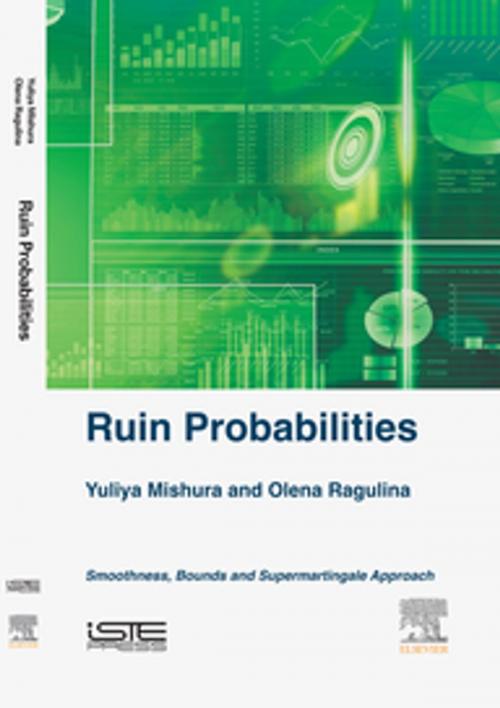Ruin Probabilities
Smoothness, Bounds, Supermartingale Approach
Nonfiction, Science & Nature, Mathematics, Probability, Statistics| Author: | Yuliya Mishura, Olena Ragulina | ISBN: | 9780081020982 |
| Publisher: | Elsevier Science | Publication: | November 8, 2016 |
| Imprint: | ISTE Press - Elsevier | Language: | English |
| Author: | Yuliya Mishura, Olena Ragulina |
| ISBN: | 9780081020982 |
| Publisher: | Elsevier Science |
| Publication: | November 8, 2016 |
| Imprint: | ISTE Press - Elsevier |
| Language: | English |
Ruin Probabilities: Smoothness, Bounds, Supermartingale Approach deals with continuous-time risk models and covers several aspects of risk theory. The first of them is the smoothness of the survival probabilities. In particular, the book provides a detailed investigation of the continuity and differentiability of the infinite-horizon and finite-horizon survival probabilities for different risk models. Next, it gives some possible applications of the results concerning the smoothness of the survival probabilities. Additionally, the book introduces the supermartingale approach, which generalizes the martingale one introduced by Gerber, to get upper exponential bounds for the infinite-horizon ruin probabilities in some generalizations of the classical risk model with risky investments.
- Provides new original results
- Detailed investigation of the continuity and differentiability of the infinite-horizon and finite-horizon survival probabilities, as well as possible applications of these results
- An excellent supplement to current textbooks and monographs in risk theory
- Contains a comprehensive list of useful references
Ruin Probabilities: Smoothness, Bounds, Supermartingale Approach deals with continuous-time risk models and covers several aspects of risk theory. The first of them is the smoothness of the survival probabilities. In particular, the book provides a detailed investigation of the continuity and differentiability of the infinite-horizon and finite-horizon survival probabilities for different risk models. Next, it gives some possible applications of the results concerning the smoothness of the survival probabilities. Additionally, the book introduces the supermartingale approach, which generalizes the martingale one introduced by Gerber, to get upper exponential bounds for the infinite-horizon ruin probabilities in some generalizations of the classical risk model with risky investments.
- Provides new original results
- Detailed investigation of the continuity and differentiability of the infinite-horizon and finite-horizon survival probabilities, as well as possible applications of these results
- An excellent supplement to current textbooks and monographs in risk theory
- Contains a comprehensive list of useful references















